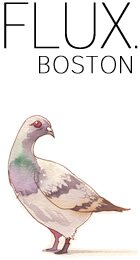On the 5th floor of 10 Newbury, high above the bustle of Boston’s Back Bay street level galleries, Barbara Krakow has been holding court since 1983. A visit to the legendary space is always an adventure, one that begins with an elevator ride. Slowly flashing numbers provide a few moments reprieve where anticipation mounts and the absence of a storefront preview only adds to the excitement; you never quite know what the doors will open to reveal. In this instance, Mel Bochner’s text-based piece, SILENCE ushers you into the gallery on a wave of bravado. The silkscreen is an emboldened work that shirks niceties in favor of blunt candor, expounding vulgarities that would otherwise result in a mouth full of soap.
It was clear from the offset that SILENCE, along with the other works on view, would be anything but quiet. The exhibition is a survey of Bochner’s editioned works from 2007 to present, including seven brand new pieces whose pigment was still drying mere moments before installation.
There is an emphasis on color and form, ordered chaos, and a playful relationship with language sparked by the introduction of slang to Roget’s Thesaurus in 2001. Bochner, who gained attention in the 1960’s for his work as a writer, curator, and artist, has always had an interest in process based works. Early on he developed a series of large scale installations that mapped permutations and attempted to define a common language through measurements in a manner not unlike the calculated murals of Sol Lewitt.
However, the presence of the process is far more subtle at Barbara Krakow, lying just beneath the surface.
On a feature wall of the gallery, Bochner’s commanding SCOUNDREL silk screen first appears to be a straightforward two layer stencil, yet it is anything but simple. 136 colors are disguised within the subtleties of the composition. The text itself has a sculptural quality, vibrant hilltops that seem to rise from the canvas are actually an illusion. The trompe-l’oeil was achieved by a skillful rendering of details across multiple layers; a meticulous process that is also responsible for the painterly background of yellow, hardly a casual swash.
Despite the pleasant palette of pastels, SCOUNDREL’s language increases in fervor as it trails down the canvas, a recurring crescendo that is the hallmark of Bochner’s oeuvre. And while in some ways, this textual de-evolution from formal to feral is notably uncouth, there is a refreshing boldness within the last line that speaks to the devil on our shoulder, conveying our most innermost thoughts that are rarely expressed, at least not in polite company.








